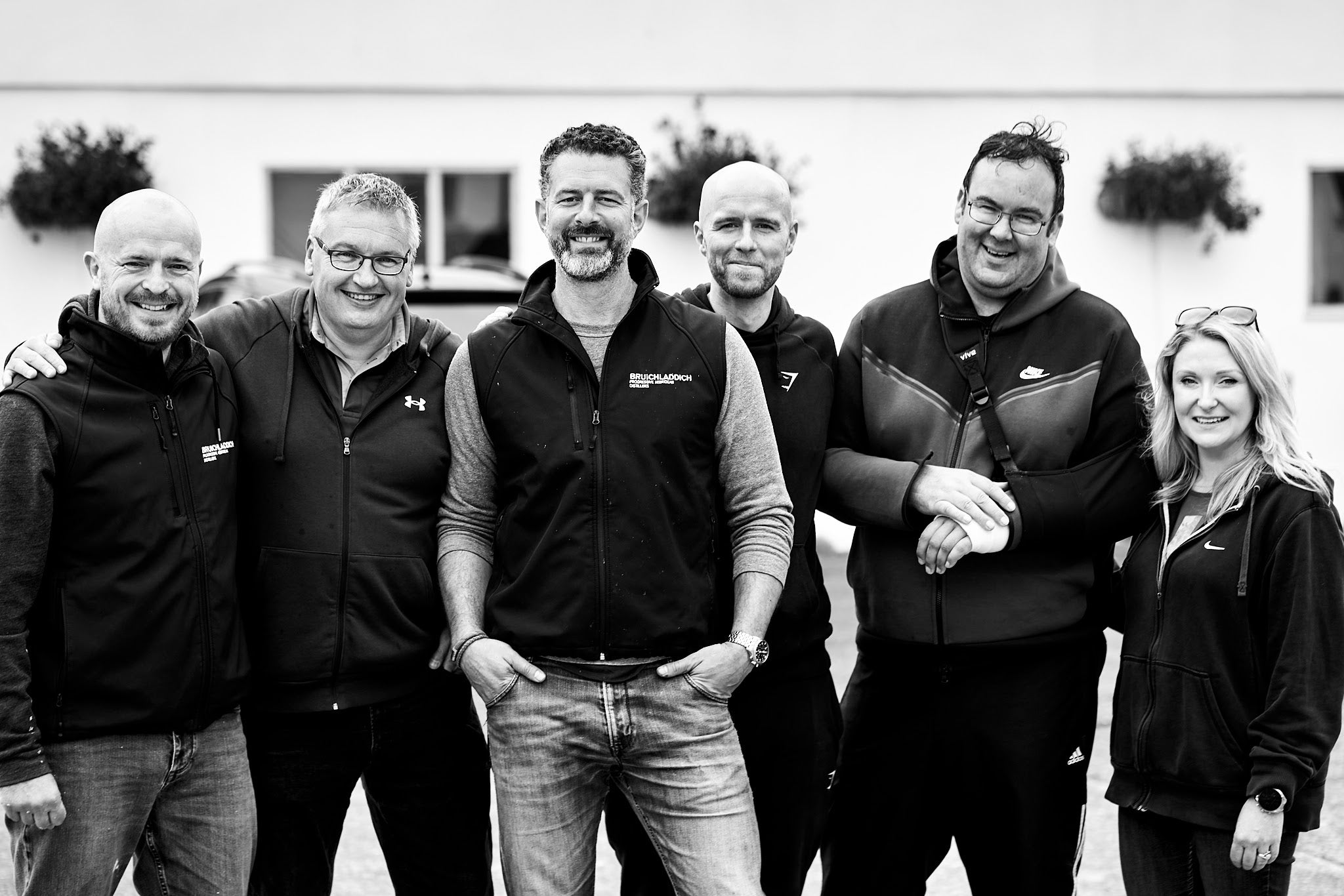What's the story behind how the Black Art concept started?
The Black Art concept was very much Jim McEwan’s. It was a vehicle for him, starting from ambition and the ability/freedom to explore the wood, to revel in the blending and the role of the cask in making whisky. Jim is a whisky legend who started out as a cooper. Even though he had been running distilleries and involved in everything, one of his great loves was maturation.
When he started at Bruichladdich Distillery, they were going into new territory with sourcing casks. They had the freedom and ability to start buying casks from some of the great chateaux in Bordeaux and around the world, using flavours and casks that hadn’t been used before. The quality of the oak that was being used was absolutely phenomenal.
French oak is very different to American oak, which was 99.9% what was used in the whisky industry then. Exploration, challenge, has deep roots in the origins of the distillery and origins of Black Art. It was about trying new things and seeing where the flavour was going.
In my role, I know that when you take some Bruichladdich spirit that’s been maturing in a refill bourbon hogshead with a classic flavour, then you put it into a red wine with amazing French oak behind it, you start picking up all these amazing fruity, charry notes from the wine. Then this lovely structure and quality of the oak comes through to help shape that spirit… You get something completely different! It’s a new lens of flavour. So many new things develop that you completely turn away from the previous maturation profile.
When Jim was blending these casks, he would transfer the whiskies into certain casks and keep adding, making all these layers of flavour, things people hadn’t tasted before. There was this creative storm going on, bringing all these flavours all together.
That was the concept of Black Art. The name idea came to him because somebody asked the question ‘Jim, what are you doing?’ ‘Can’t tell you, completely secret – just trust me’.
So the craft, the secrecy, it was like an opportunity to try things that people hadn’t done before. The more we said, ‘We’re not going to tell you, this is just what we do! You don’t need to know; you just need to enjoy it…”, the more freedom we had to look at the layers of flavour you could get from hundreds of different cask types. The editions follow a sort of instinct through all those different options. They have a similar story, same DNA, but each one is an unrepeatable, unique whisky.
AS A PROJECT, BLACK ART HAS A LOVELY PERPETUITY TO IT: IT WAS STARTED BEFORE YOU BY YOUR PREDECESSOR, AND CASKS YOU LAY DOWN NOW WILL BE HANDLED BY YOUR SUCCESSOR - HOW DOES IT FEEL TO BE PART OF THIS LEGACY?
For me that goes wider than Black Art; that’s what distilling is!
That’s one of the great things you very quickly realise when you first walk into a warehouse and start moving barrels that have been laid there, with dates on from before you were born.
For the stock we are laying down today, I won’t be the person putting that into a bottle.
Something that Jim always used to say, and I think I have always been aware of, is that your job is to look after the distillery for the next generation. Leave it in a better place than where you found it.
I look back at Jim and Duncan (McGillivray)… When they brought Bruichladdich back to life, everything was about building it back up. I can see now that they put as much hard work in as they could so that when Allan (Logan) and I took over those roles, we were in a better position. I see our jobs as the same thing. It’s about growing Bruichladdich, building it and about putting in foundations to pass on to the next generation.
We have interesting challenges just now (I say interesting, but they are scary…). Sustainability concerns, and climate change, mean it’s critical to our job now how we think differently and evolve. How will we leave this distillery in a better place for future generations?
I do see that with Black Art, but its wider than Black Art. That’s what distilling is. It’s time travel I suppose.
The project seems to be a blessing and a curse: it’s one where you have complete creative freedom, but there’s also a pressure to make something incredible every time. How do you overcome these pressures?
I suppose I don’t really see it as pressure. What you have got to remember is that we are not just looking at that one moment? It goes from the barley that’s grown, to the way the spirit’s distilled, to the cask that we fill, the cask that we blend and re-cask… At each part of the process, it's being monitored to ensure it’s at its best, at every single point. So when I go to blend that Black Art, I’m not worried about anything. We have put the work in so I know that when I start that blending process, I’m starting with excellence.
For Black Art, I may start looking at the recipe seven or eight years before it ends up in a bottle, it could be longer.
It’s not something to worry about, but a lovely thing is you don’t know what you will end up with. There is experience and knowledge there to guide you along the way and you know what you want to try and aim for but you don’t know how that spirit’s going to work out until it's finished. You have got to take risks – no one ever did anything great from repeating the same old, same old; it’s about trying new things. That’s the DNA that’s been instilled in me, to try new things - it maybe comes quite naturally to the distillery as its what we have always known.
That creative freedom – if you feel pressured by that then you are probably in the wrong job! It should be a pleasure to have that creative freedom, to try new things and see what happens; that’s the essence of Black Art.
You Might Also Like
Discover the latest stories and news from Bruichladdich Distillery

